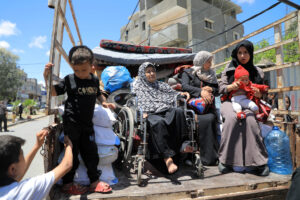
Nakba Day and its significance to Palestinians
On May 15 we commemorate Nakba Day, mourning the ongoing atrocities Palestinians face. Here we look at the day’s origins and significance.

UP TO DATE as of 26/5/2025
In Gaza, an uncertain situation remains. A ceasefire came into effect on January 19, 2025, after 15 months of terror. Yet, on March 18, 2025, the airstrikes returned.
Gaza remains a crisis in need of dire attention. Over 53,000 Palestinians killed. Tens of thousands more injured. Over a million displaced.
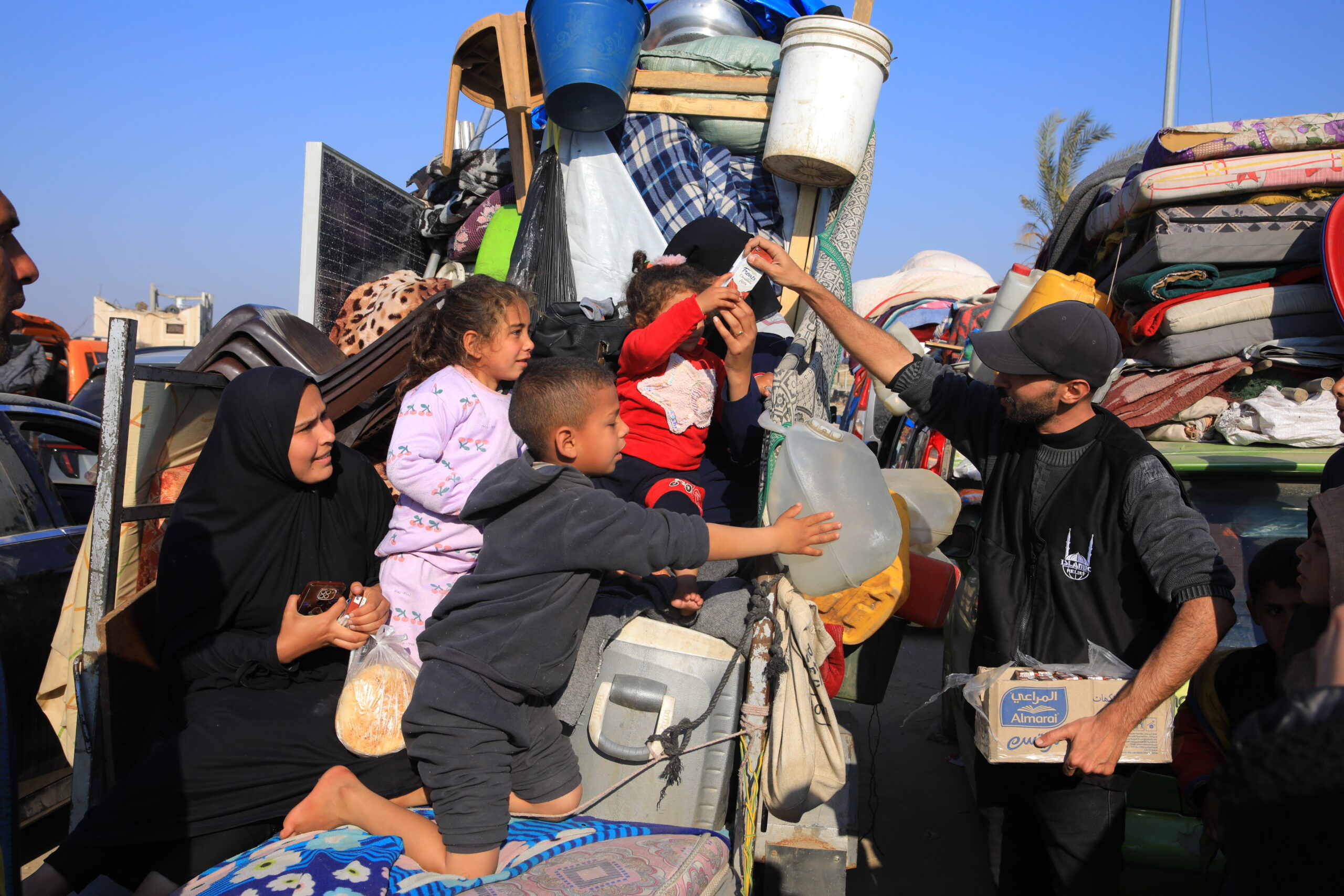
The scale of loss and destruction in Gaza is indescribable. For over 500 days, Israel carried out atrocities against Palestinians in Gaza.
They used starvation and denial of humanitarian aid as weapons of war, and sought to destroy every part of Gaza’s infrastructure and society.
The temporary ceasefire offers some hope, but Gaza has been razed to the ground, and its people continue to suffer greatly.
With the ceasefire broken, the death toll continues to climb. Over 53,900 dead, with a heartbreaking 17,841 children and 12,298 women among the casualties.
So far, we’ve distributed:



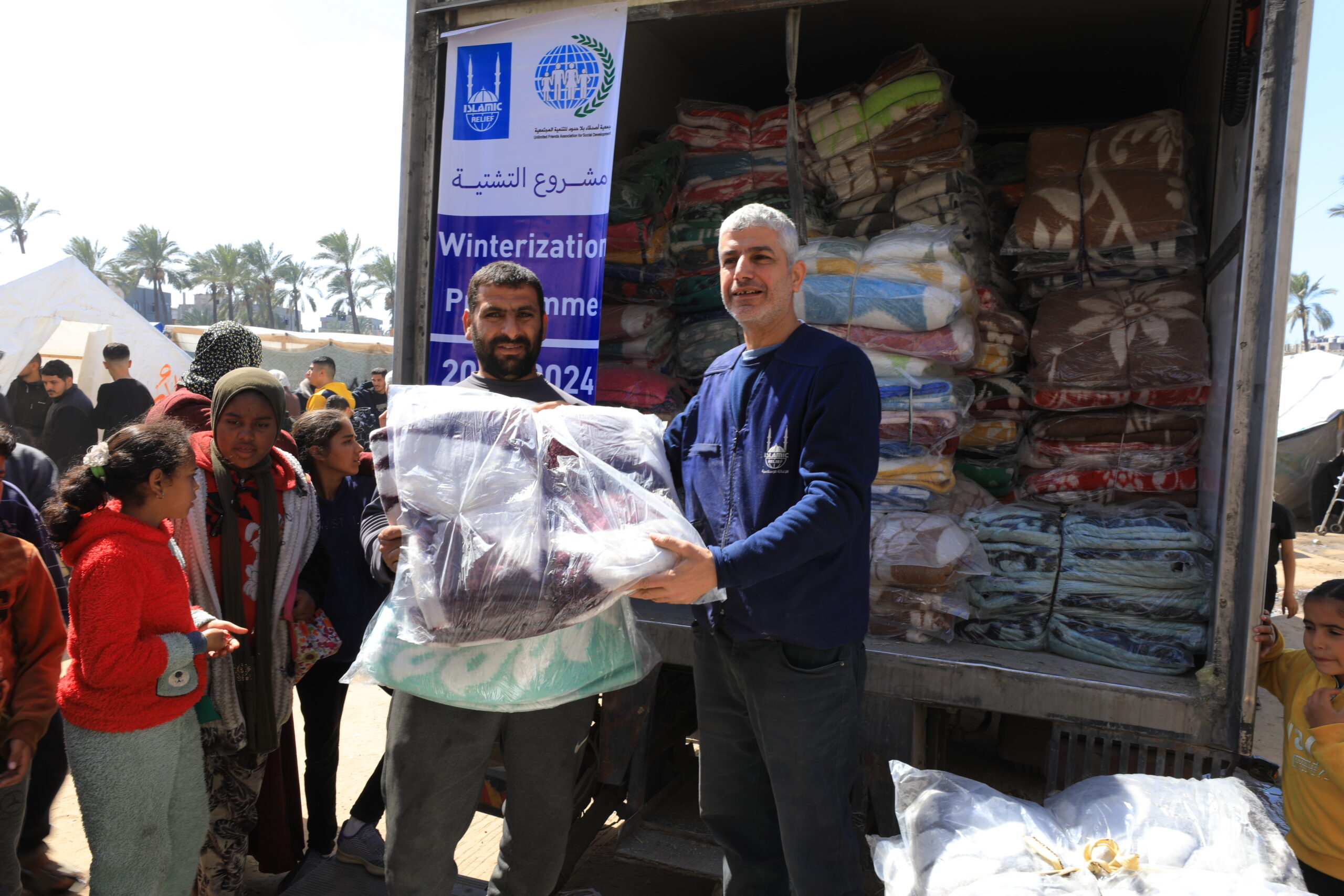
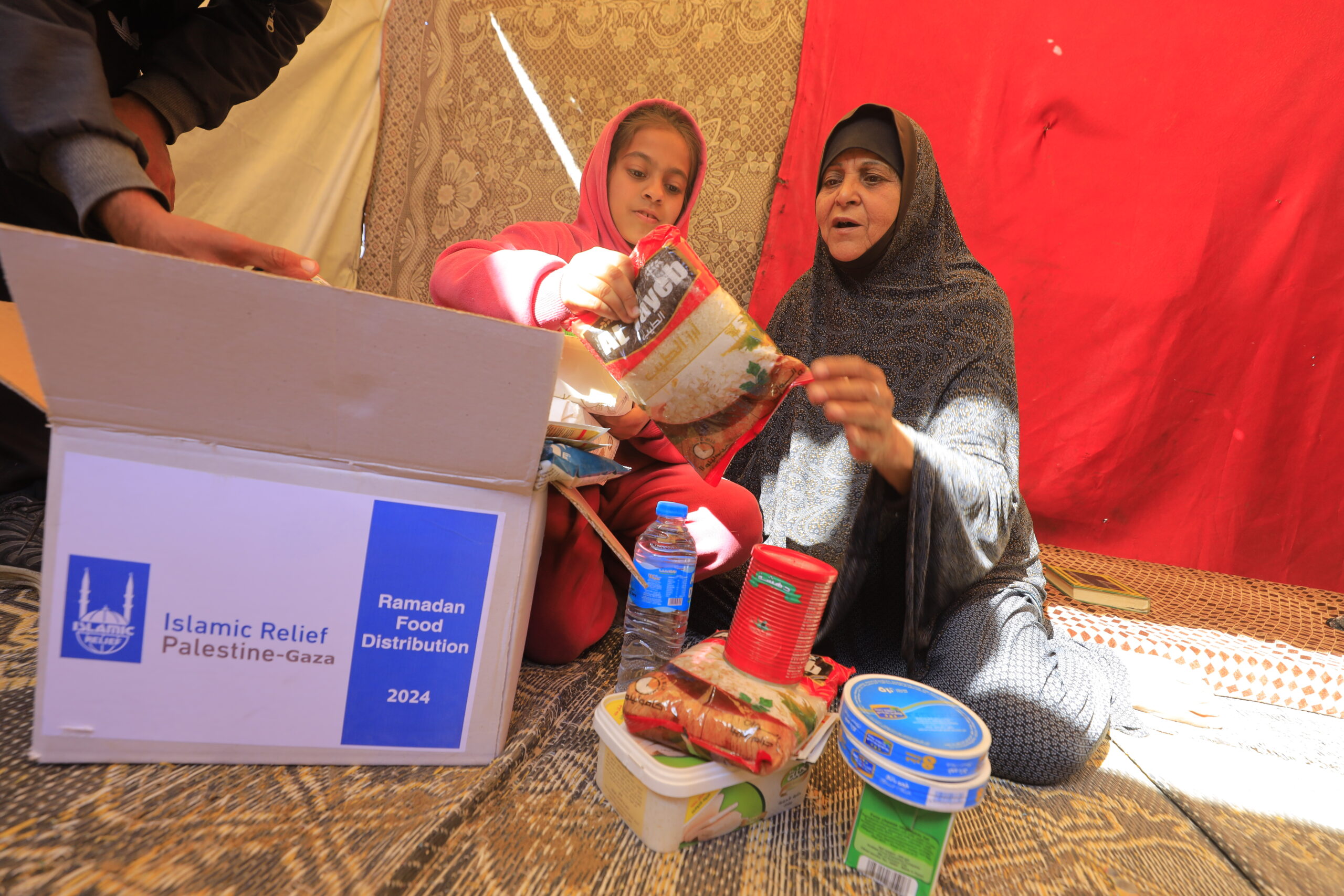
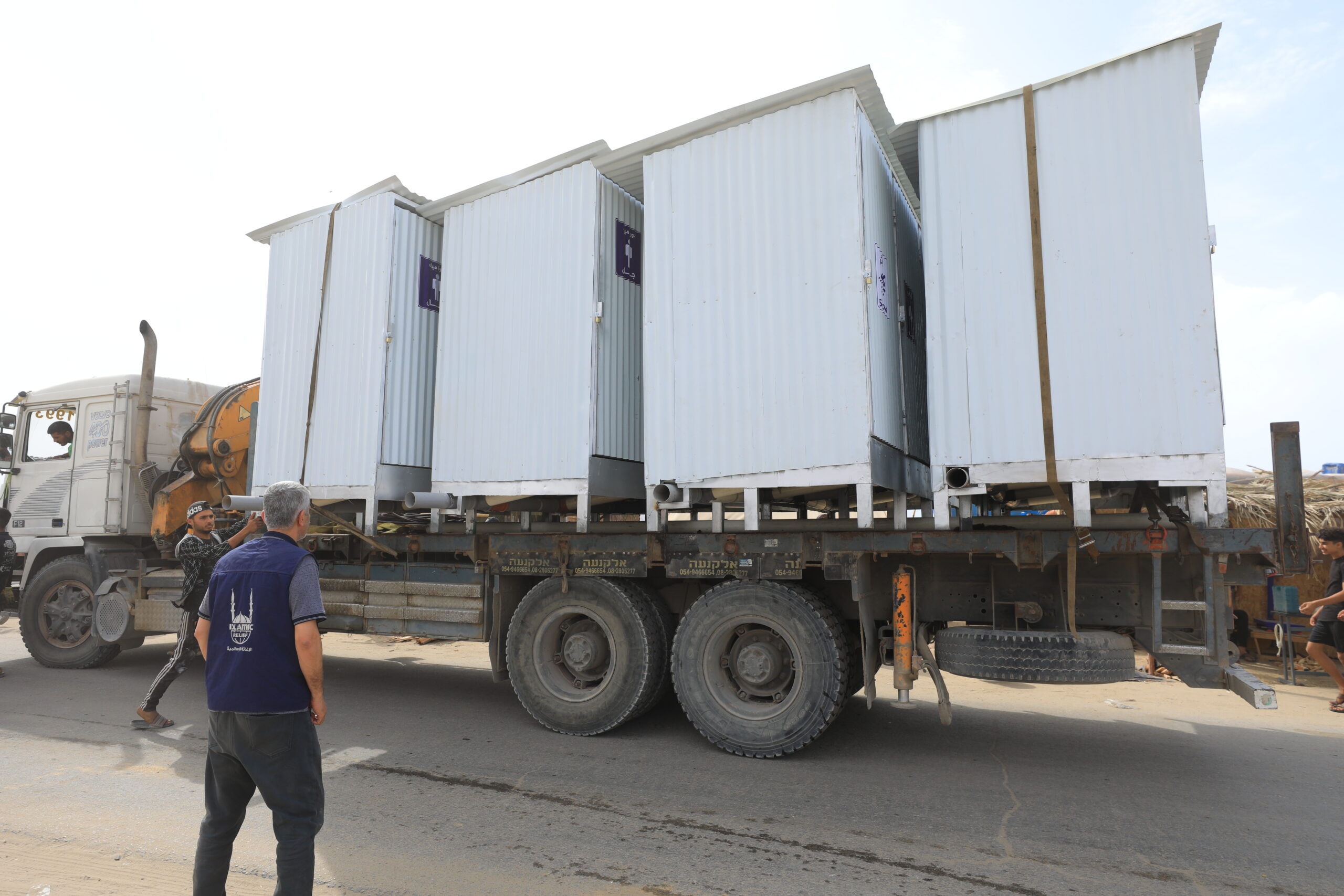
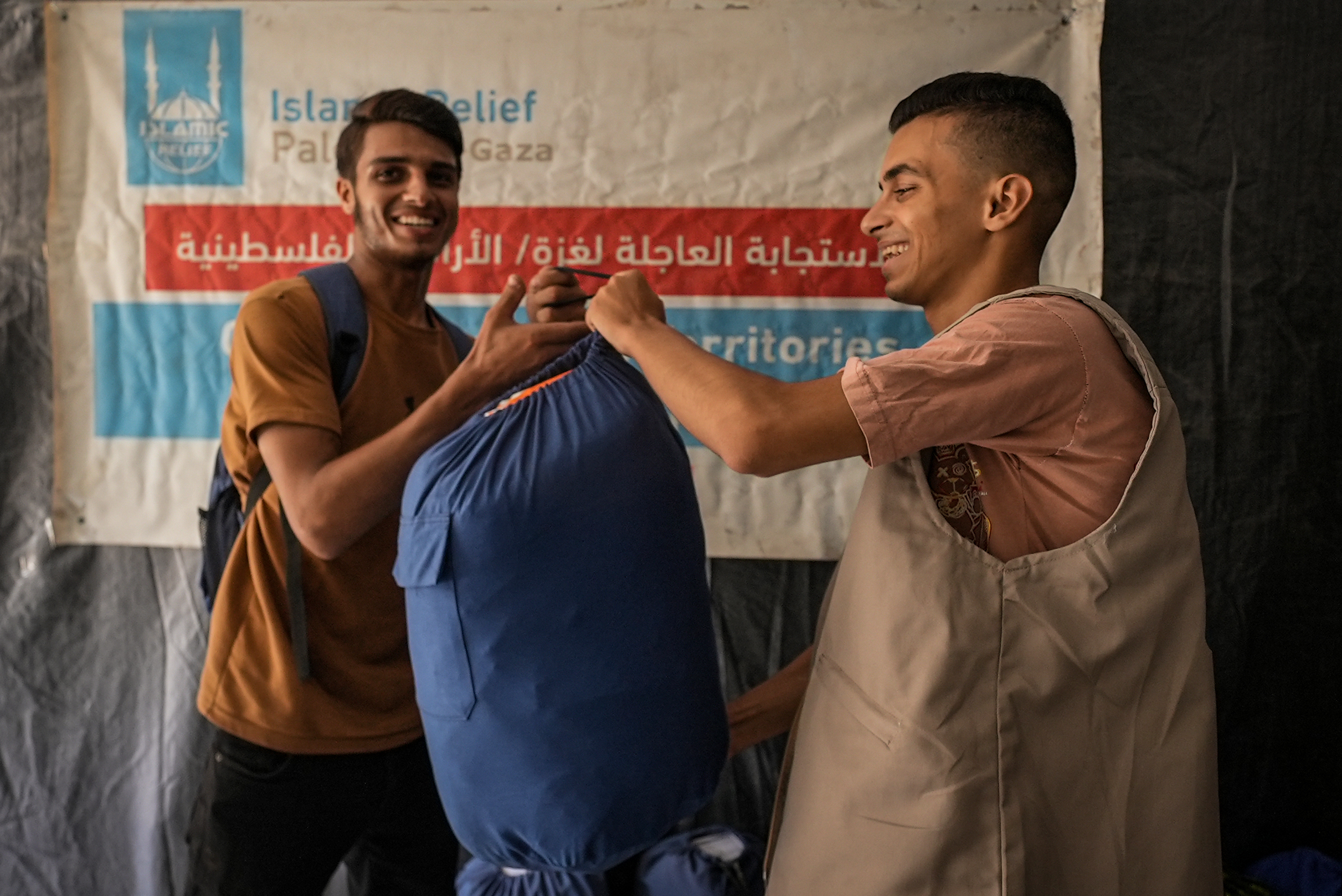
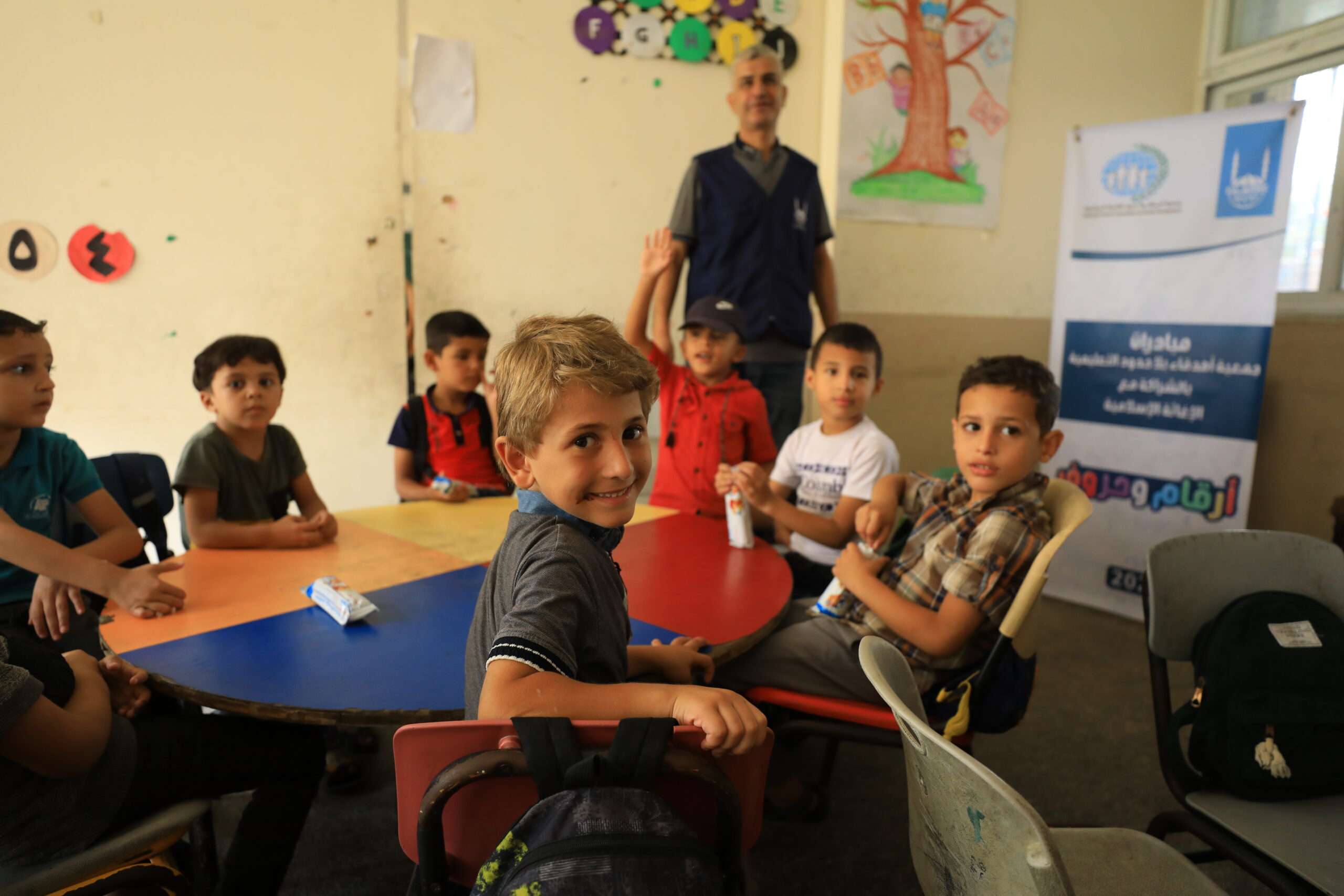
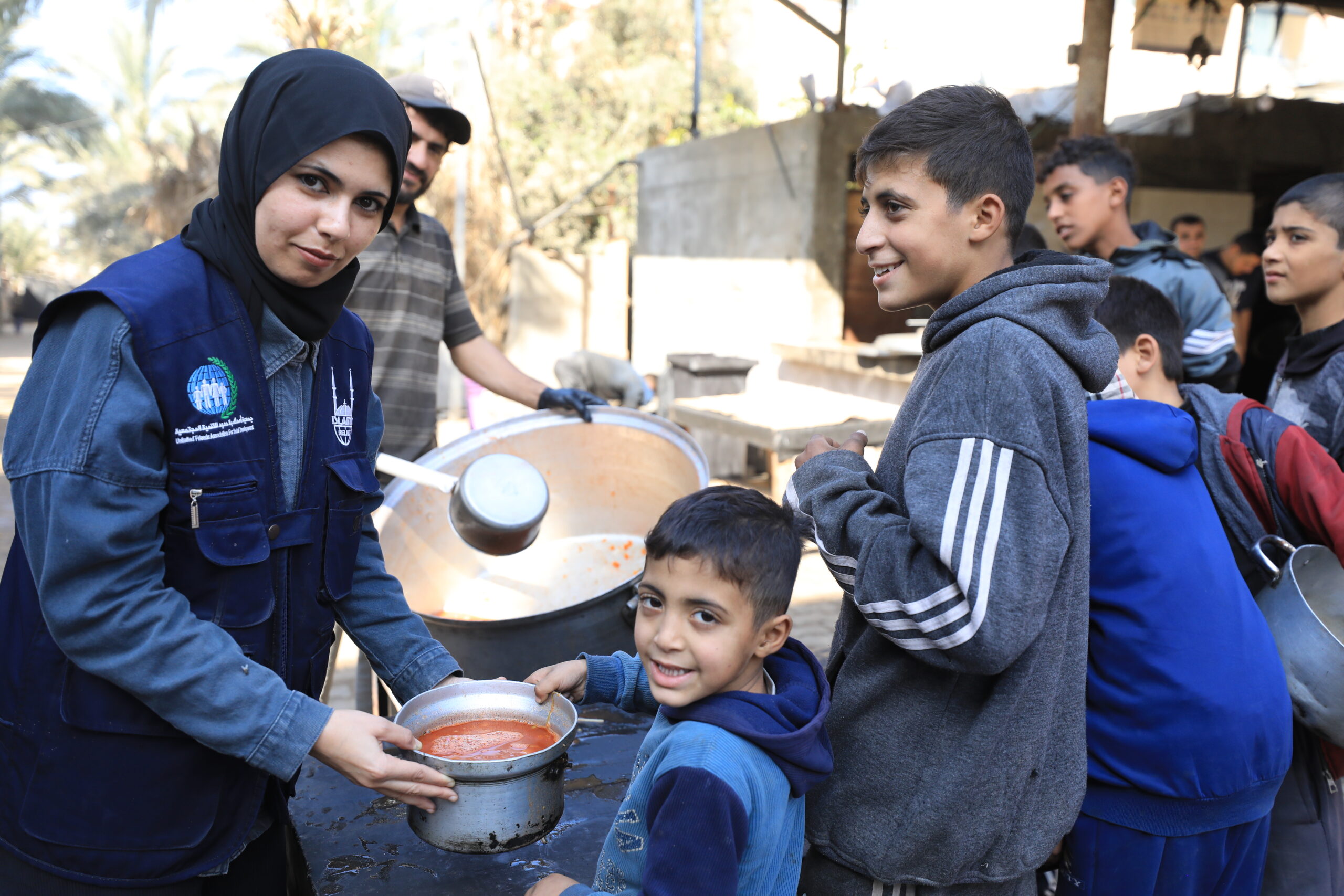
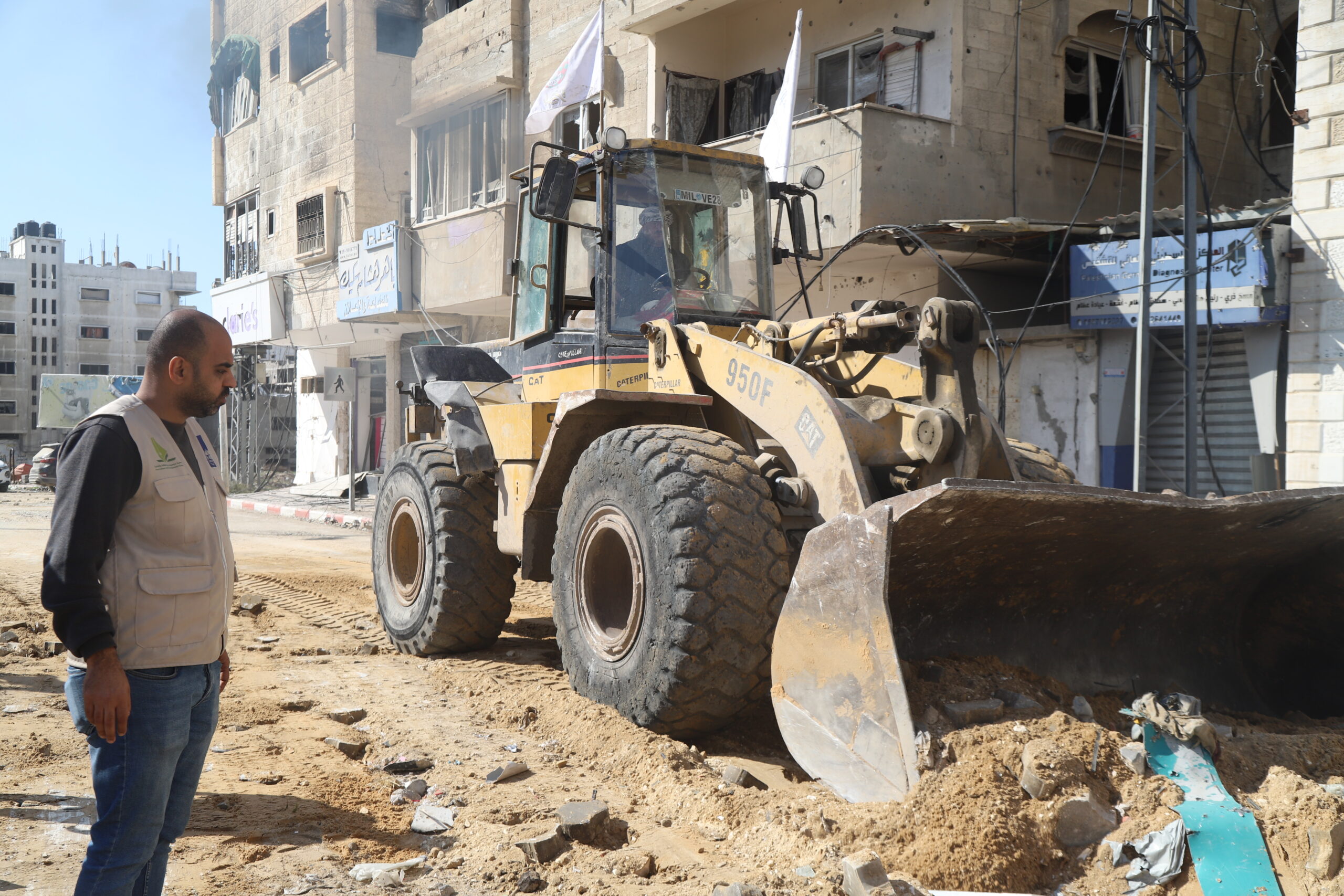

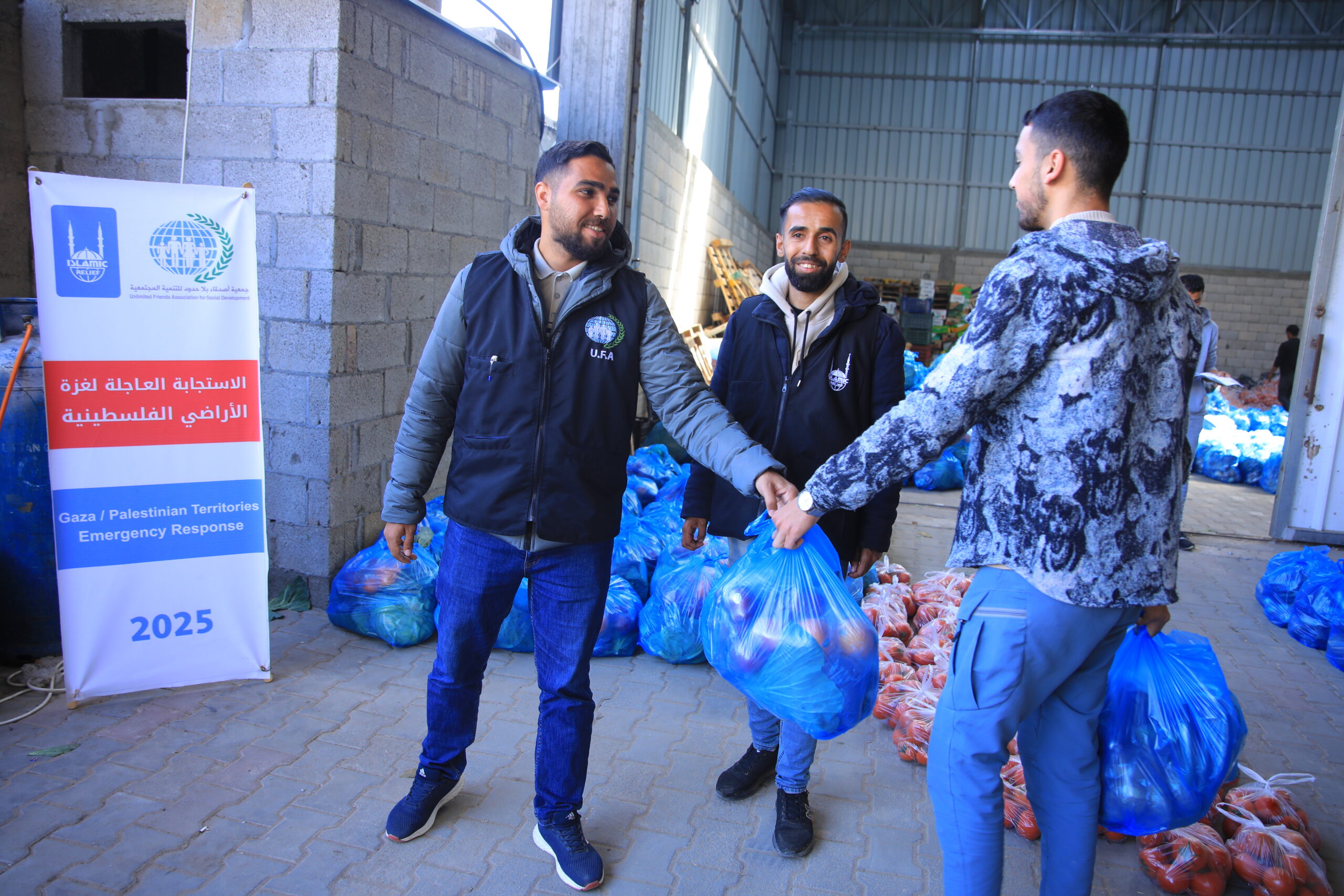
A Summary of the Events
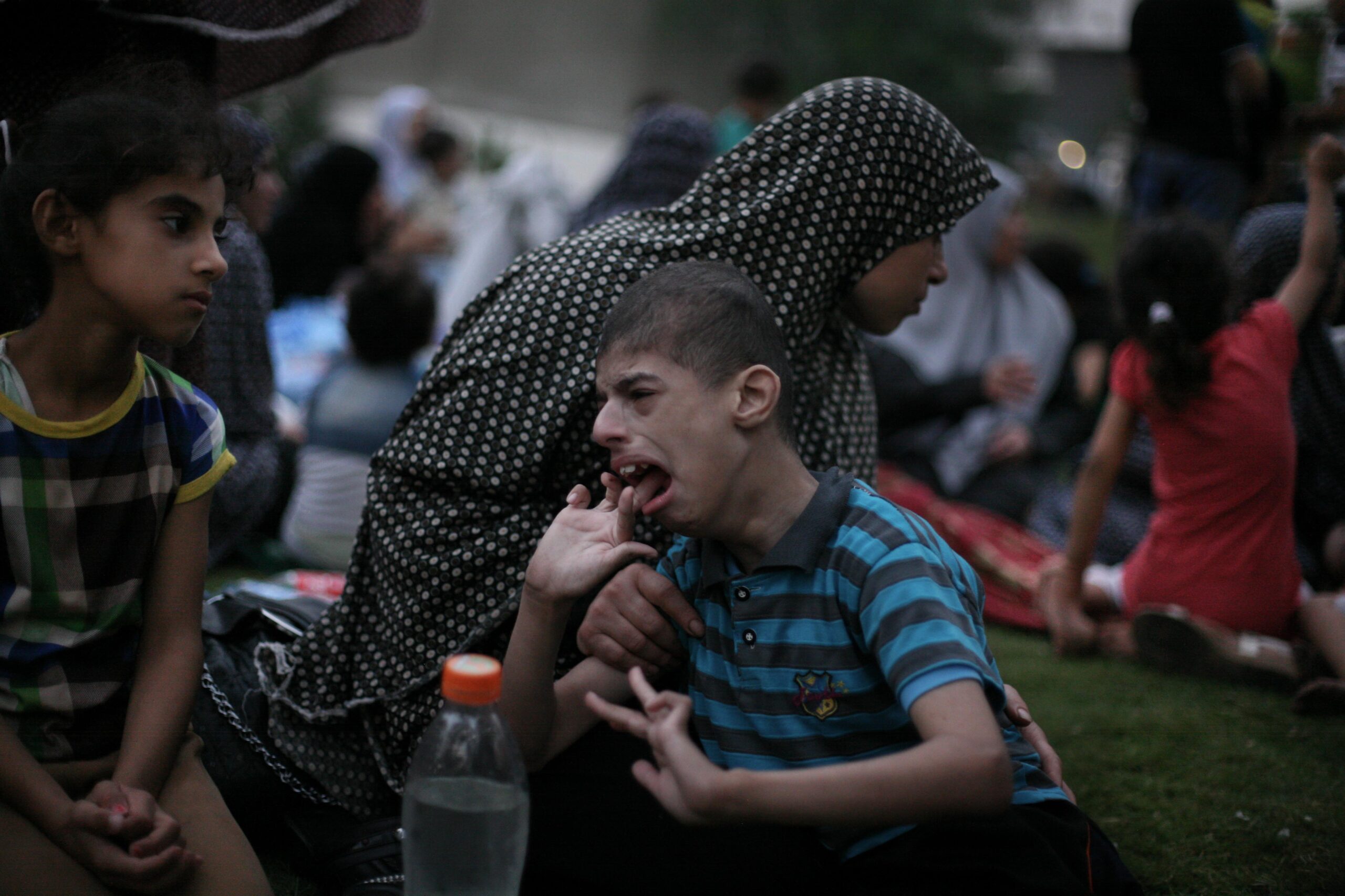
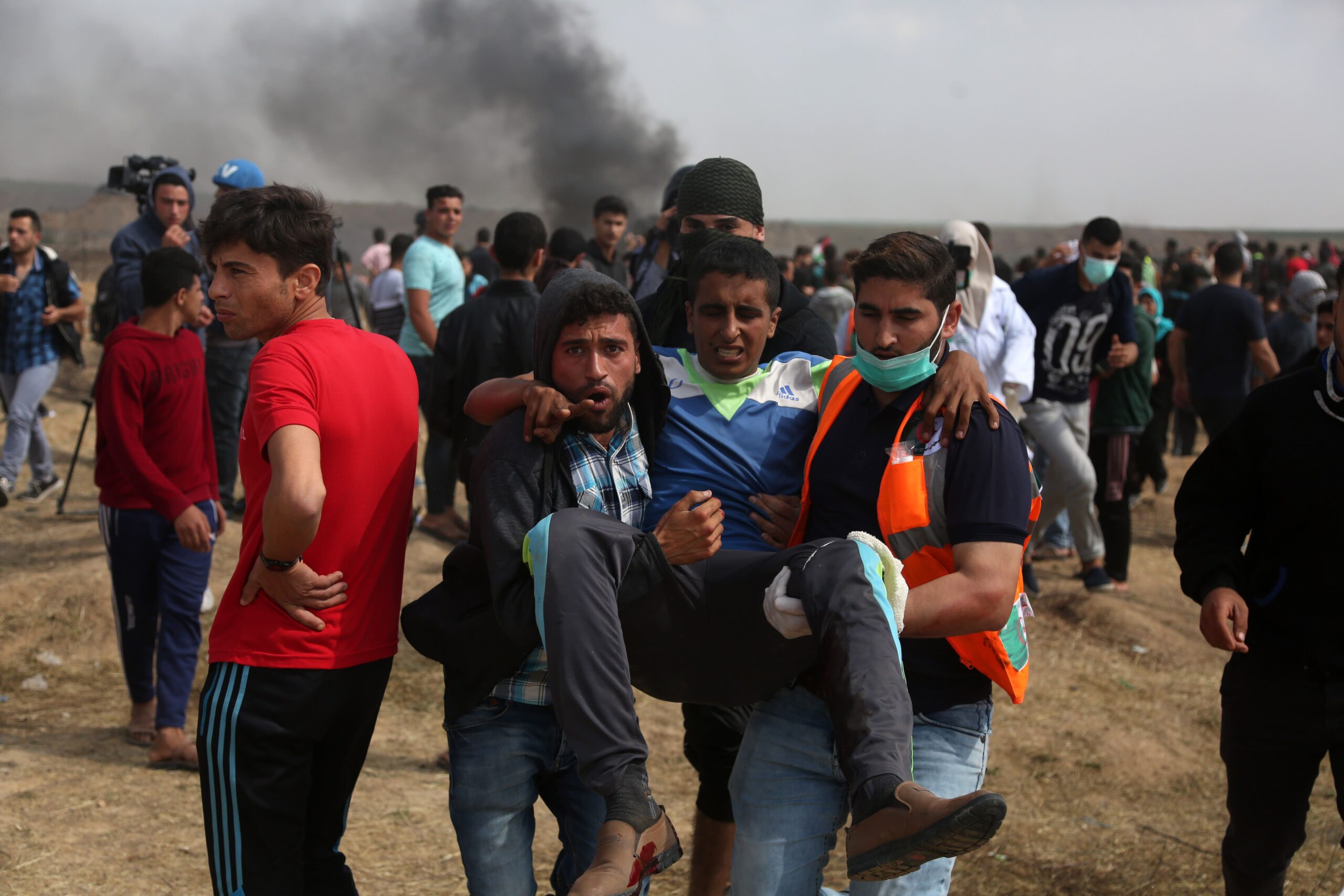

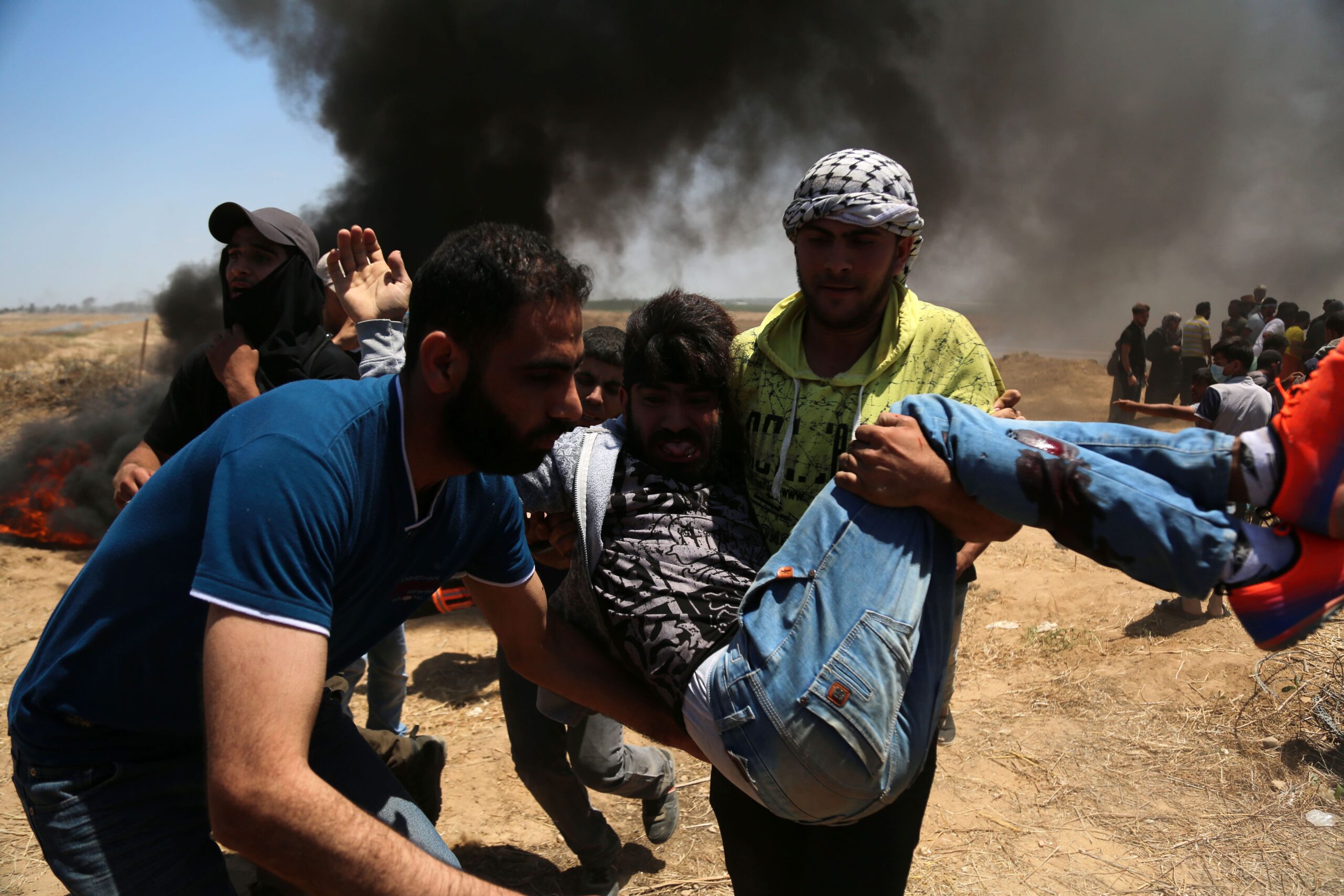
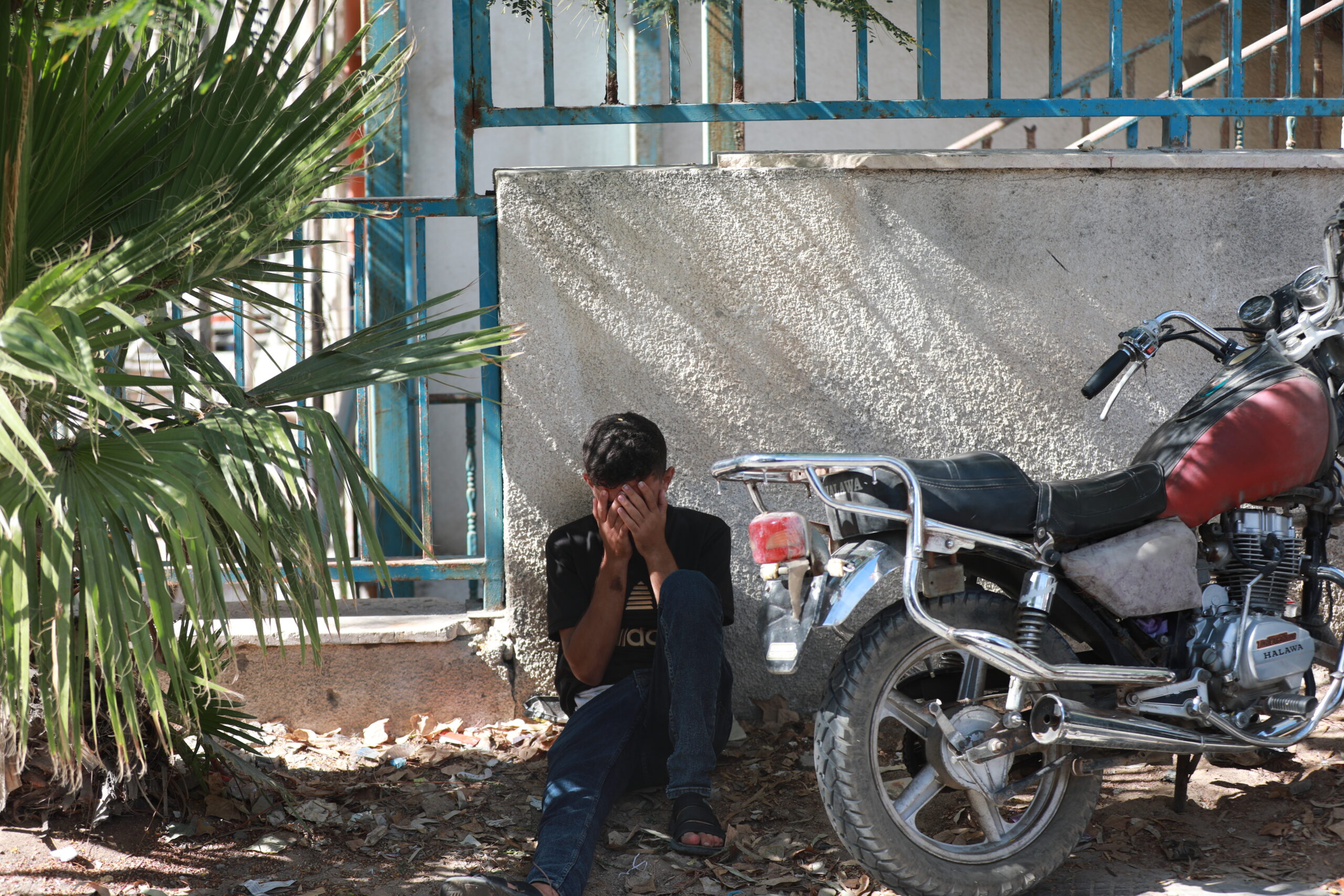
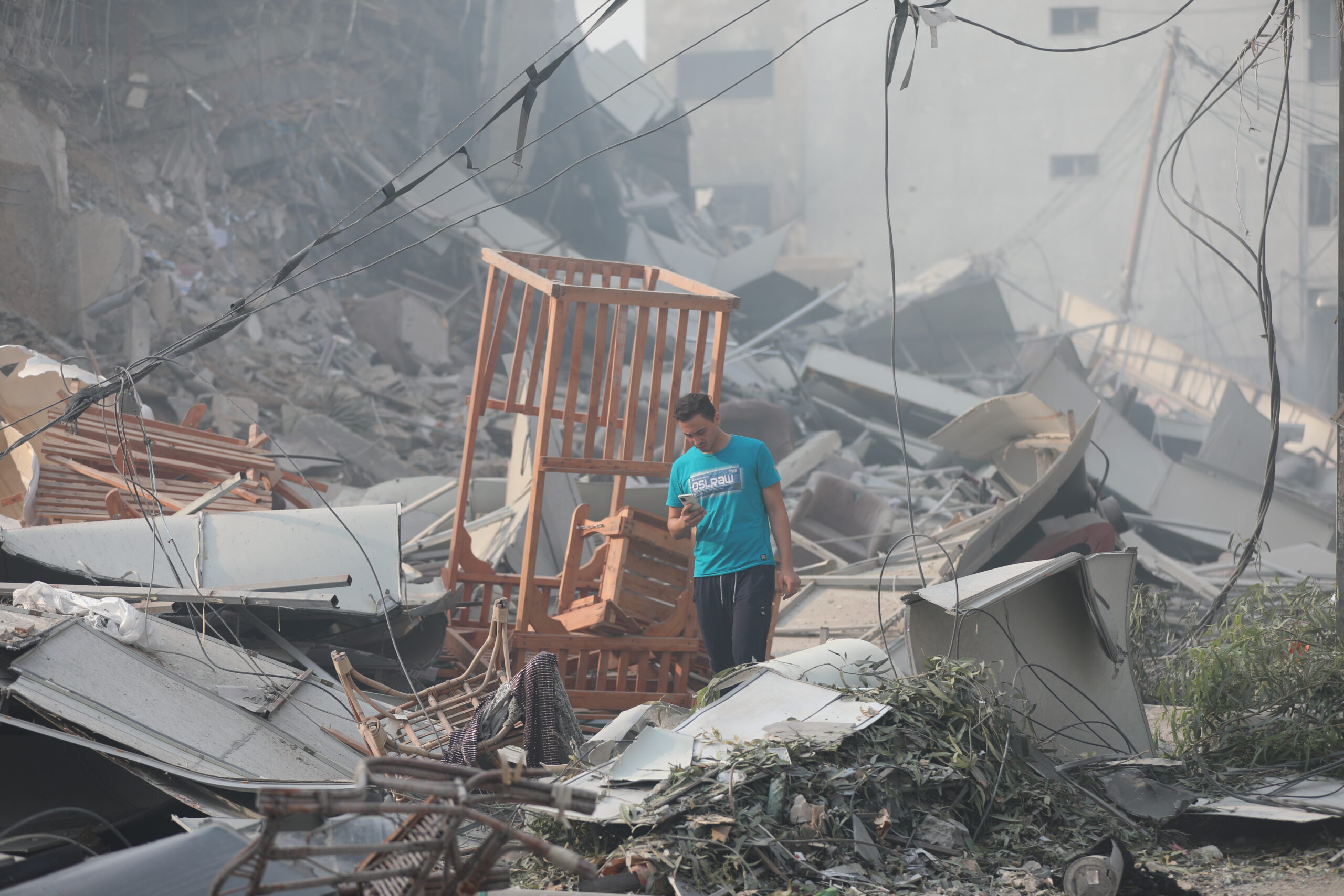

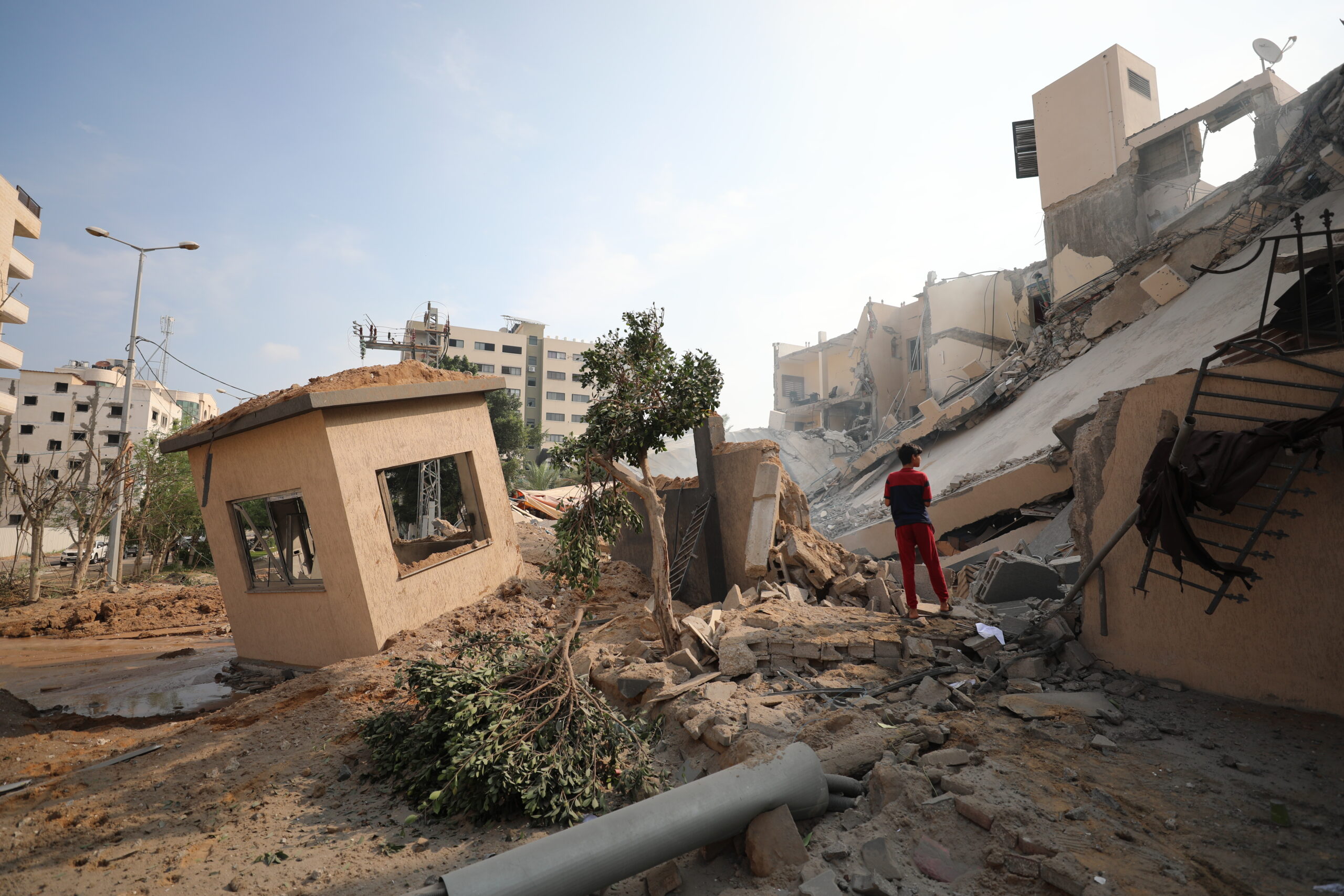

From 7 October 2023 until 30 July 2024


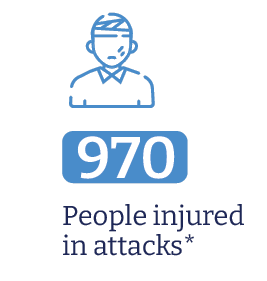

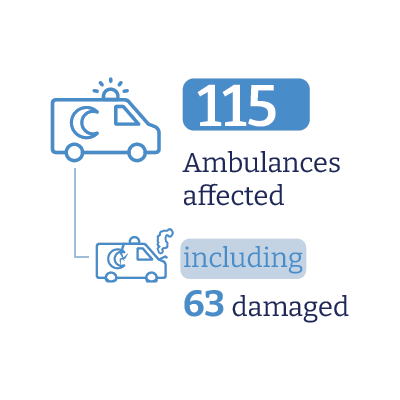
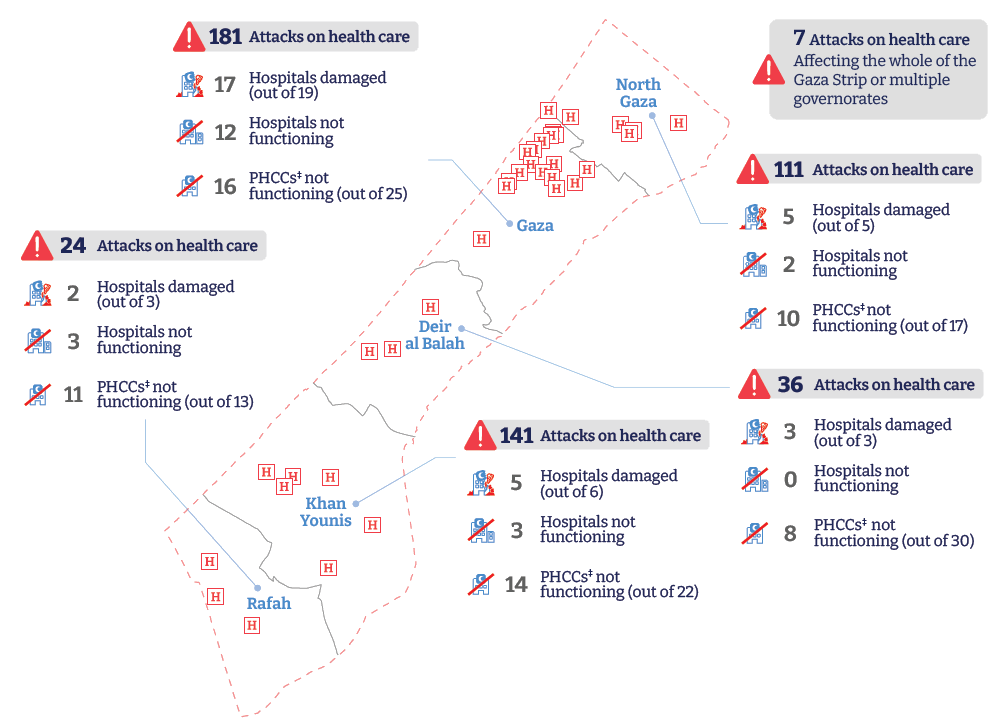
Israel has turned Gaza into hell on earth. Islamic Relief staff and partners on the ground say the situation is now the worst they have ever seen there.
Relentless and indiscriminate Israeli bombing is killing civilians every day, burning families to death in their tents, maiming young children, and tearing through hospitals and school shelters. People have been wounded by bombing in their neighbourhoods, then killed by bombs striking the hospitals and shelters where they seek refuge and treatment. Nowhere is safe.
Since 2 March, Israel has completely sealed off Gaza and prevented any humanitarian aid or commercial supplies from entering.
Gaza is now in the grip of starvation as food runs out. Famine conditions are spreading fast, with young children starving to death and families scavenging through rubbish on the streets to try to find a few scraps to eat. Doctors report horrific cases of children too emaciated and malnourished to stand up, and most people are going entire days without eating. Parents are going without and giving all their food to their young children, but it’s still not enough to keep them healthy.
Meat, fruit, vegetables, eggs, and dairy products are now almost impossible to find. The price of items such as wheat flour has risen by 3000% since the closure, at a time when few people have jobs or access to cash. Bakeries have shut down due to the lack of flour and fuel. Even when people do have food, there is an extreme shortage of cooking gas. Most people now rely on unhealthy canned goods, as those are all they can find and afford.
More than 19 months of Israeli attacks have destroyed Gaza’s ability to feed itself, with most agricultural land, greenhouses, and fishing boats destroyed and most cattle killed. This has left all civilians in Gaza reliant on humanitarian aid that is now banned.
Israeli military orders have yet again forced hundreds of thousands of people to leave their homes, with areas such as Rafah now completely emptied of Palestinians. Families are being herded into ever-shrinking areas where there is no clean water, no functioning sanitation and no safety. Multiple families share tents and communal shelters, and there are growing risks of deadly diseases spreading in the desperately overcrowded conditions.
People suffering from injuries, malnutrition, or disease are unable to access decent healthcare and treatment, as most health facilities have been forced to shut down or are operating at greatly reduced capacity. Many hospitals have been repeatedly attacked, and the Israeli siege means they cannot access medicine, medical supplies or fuel to keep generators going. Wounded civilians and patients with cancer or kidney disease suffer in agony as medics try to keep working in almost medieval conditions without drugs and electricity.
Over the past 19 months, Israel’s attacks and restrictions have turned Gaza into the world’s most dangerous and difficult place to deliver aid. Now, Israel and the US have announced new plans to dismantle the current humanitarian system in Gaza. These plans would contravene core humanitarian principles, entrench the Israeli occupation and weaponise aid as a tool of forced displacement.
More than 52,000 Palestinians have been killed and over 120,000 wounded, according to official reports. This means between 7-8% of Gaza’s population is now dead or wounded.
More than 16,000 children have been killed, including thousands of young babies and infants. A UN investigation found that close to 70% of fatalities are children and women, the vast majority of them killed in their homes and shelters. Of the tens of thousands of people killed in residential buildings, almost half (44%) were children, with most of them young children aged between 0-9 years.
The death toll continues to rise daily as more people are killed and wounded, and the eventual death toll from disease and starvation could be far higher. A May 2025 study found that deaths only from violence are more likely to be between 77,000 and 109,000, while a July 2024 study published in The Lancet estimated that the final death toll could exceed 186,000 people. Another Lancet study in February 2025 found that life expectancy in Gaza has fallen from 75.5 years in October 2023 to just 40.5 years by September 2024.
This death toll should be a source of eternal global shame. They are not just numbers. They include babies, children, mothers, fathers, doctors, farmers, shopkeepers, students, teachers, journalists, aid workers, artists, entrepreneurs, grandparents and much more. Gaza’s entire society has been targeted.
At least 418 aid workers, 1400 health workers (some also counted under aid workers), 663 educational staff and 212 journalists are among the dead. Many of the injured have lost limbs or suffered other injuries that will affect them for the rest of their lives. Thousands of children have been orphaned.
Casualties are also still rising in the West Bank, including East Jerusalem, where Israeli forces and settlers have killed more than 900 Palestinians since October 2023, including dozens in the first weeks of 2025. Israeli attacks on Lebanon since October 2023 have also killed more than 4,200 people, including at least 241 health workers, and wounded more than 17,000.
In Israel, around 1,200 people were killed in the 7 October 2023 Hamas attacks, including around 800 civilians and at least 33 children. More than 5,400 people were wounded. Since then, 412 Israeli soldiers have been killed while deployed in Gaza.
These figures are all published by the United Nations, based on reports by the Palestinian Ministry of Health and the Israeli government.
On 2 March, Israel shut all crossings into Gaza and prevented all humanitarian and commercial supplies from entering. As of late May, there has been a partial lifting of the blockage. However, only a few aid trucks have been allowed in. This is nowhere near enough to meet the immense needs on the ground.
Much more food, medicine and essential supplies are on trucks and ready to enter, but are blocked by the Israeli military just a few miles away from starving children and critically ill patients.
Our teams inside Gaza are working tirelessly, using up the last of the resources we have. They are urgently awaiting the arrival of new aid.
To ensure that we are always ready to respond, Islamic Relief is collecting funds for cash grants, food, water, medical supplies, shelter, and other vital essentials. Every donation helps us stay prepared to deliver aid the moment access is granted.
The ceasefire that came into effect on 19 January was not perfect, but it led to a significant improvement in the humanitarian situation and the safety of civilians, and the largest numbers of Israeli hostages and Palestinian detainees were released.
For many people, it was a rare moment of hope. There was a big increase in the amount of aid allowed to enter Gaza, which enabled humanitarian agencies to scale up assistance and reduce levels of malnutrition and disease. People were able to return to their homes – if they were still inhabitable – and reunite with relatives they had not seen for more than a year.
Even during the ceasefire, dozens of Palestinians were killed by Israeli fire, and Israel prevented many essential aid items from entering. For example, there was a big increase in food entering, but there were still severe restrictions on shelter items and equipment to clear rubble and unexploded ordnance, repair roads, or start rebuilding homes.
However, in March, Israeli actions shattered the ceasefire before it could enter its second phase. On 2 March, Israel closed all the crossings and placed Gaza under total siege, preventing all supplies from entering. On 19 March, Israel resumed intensive bombing, killing hundreds of people in a single day. Since then, there has been daily bombing and forced displacement.
It is vital that there is a return to the ceasefire.
Over the past 19 months, Israel has used starvation as a weapon of war, deliberately depriving Palestinian civilians of food in violation of international law.
As well as blocking aid, Israeli military action has destroyed Gaza’s capacity to produce its own food. 95% of Gaza’s cattle have died, and 68% of agricultural land has been destroyed. Around 70% of Gaza’s fishing fleet is destroyed, and fisherfolk are routinely shot at if they try to go to sea. People’s coping mechanisms are exhausted.
Together with the ongoing bombardment and displacement, this created one of the world’s worst hunger crises and pushed the territory towards a man-made famine. Children and elderly people have starved to death, and more are starving right now.
Declaring famine is a very complex and politicised issue, and we know from other experiences around the world that formal famine declarations usually only come too late, after many people have already died, or not at all. For example, during the 2011 Somalia famine, most of the 260,000 fatalities had already died from hunger and disease before famine was officially declared by the IPC.
Regardless of whether or when famine is officially declared or not, we know that Palestinians in Gaza, particularly very young children, are starving to death right now. And we know that many more are likely to die unless there is urgent action. Stopping famine is not only about providing food. There also has to be action to prevent disease and improve healthcare.
The scale of destruction is like nothing we have seen before. Israel’s relentless attacks have turned Gaza into rubble, wiping out entire neighbourhoods and destroying all sectors of society.
According to UN reports, 69% of all structures in Gaza are either damaged or destroyed, including 94% of health facilities, 92% of homes, 89% of water and sanitation services, 88% of schools and 81% of main roads. Places of worship are similarly affected, with 79% of mosques and almost all churches now damaged or completely flattened.
The economy and people’s livelihoods are also destroyed, which will leave people dependent on aid for a long time to come. Around 80% of commercial facilities, such as shops and small businesses, are damaged or destroyed, and many businesses and factories have been forced to close, leading to a steep decline in Gaza’s economic output. Farmers face enormous challenges as 82% of agricultural cropland is now damaged, as well as 68% of agricultural wells and 72% of greenhouses. Cattle owners have few animals left as 95% of cattle, 57% of sheep and 63% of goats have died. Gaza’s fishing industry is in ruins, with 72% of fishing boats destroyed. Unemployment has rocketed to around 85%.
People’s futures are also badly damaged. Almost everyone is mourning the death of loved ones, and many people have been left with life-changing injuries, including loss of limbs. Almost everyone has gone through traumatic experiences, and many are left with long-term mental health impacts that will affect them for a long time to come.
The situation in the West Bank, including East Jerusalem, is at a boiling point as violence and oppression against Palestinians there increase. Palestinians face daily human rights violations that affect every aspect of life.
Even before October 2023, that year was already the deadliest for Palestinians in the West Bank since the end of the second Intifada in 2005. Since 7 October 2023, Israeli attacks have intensified even further and killed more than 930 Palestinians, including around 200 children, and wounded more than 8,500 – mostly from live military fire and also frequent airstrikes, which were rarely seen in the West Bank before October 2023. In the same period, 46 Israelis have been killed, including soldiers.
These attacks show no sign of slowing down – in the first four months of 2025, at least 118 Palestinians have been killed, including 23 children. One of them was a 2-year-old girl shot in the head while she ate dinner with her family in her village.
In January, as the ceasefire was beginning in Gaza, Israel launched a major military offensive in the northern West Bank, starting in the city of Jenin and then spreading to other areas such as Tulkarem and Tubas. This ongoing offensive, which the Israeli military refers to as Operation Iron Wall, has forcibly displaced more than 40,000 Palestinians from their homes, the largest and fastest displacement in the West Bank for decades. It has destroyed entire neighbourhoods, with homes, roads, and hospitals bombed into rubble and previously bustling communities now emptied of people.
The Israeli military has imposed increasing restrictions on Palestinian movement across the West Bank, closing roads, detaining civilians for hours at a time, and installing new iron gates to control movement in and out of villages. This prevents people from reaching relatives, markets, farms, schools, health facilities, businesses, and places of worship. Palestinian civilians often face harassment, humiliation, detention, and assault when trying to pass Israeli military checkpoints, and medical staff and humanitarian workers are frequently obstructed, preventing them from reaching wounded and vulnerable civilians. Israeli troops have particularly increased restrictions in villages that are home to Palestinian prisoners who were released during the Gaza ceasefire.
Armed Israeli settlers have also stepped up violent attacks and intimidation of Palestinian villagers. OCHA has recorded an average of around 4 settler attacks a day since October 2023. These attacks are carried out with complete impunity and in many cases actively supported and accompanied by Israeli troops. Settler attacks have killed and injured Palestinian civilians, damaged homes, stolen agricultural equipment, burnt farmland, and chopped down thousands of olive trees on which families depend their livelihoods and which have belonged to Palestinian families for generations.
We are also seeing an increase in the demolition of Palestinian homes and other structures, such as agricultural facilities or schools, in Area C of the West Bank. Between 2009 and 2022, Israel demolished an average of 654 Palestinian structures every year, citing a lack of building permits, which in practice are almost impossible for Palestinians to obtain. In 2023, at least 1,129 such demolitions were recorded, the highest annual total since the UN started tracking the data almost 20 years ago. In 2024, this rose even higher to 1,768 demolitions. In the first 4 months of 2025, at least 580 structures have been demolished. Thousands of Palestinians have been displaced as a result.
Even before October 2023, Gaza’s health system faced daily challenges to keep functioning, with frequent shortages of fuel and medical supplies due to the Israeli blockade.
Now, after 18 months of repeated targeted Israeli attacks, 94% of all health facilities in Gaza are either damaged or destroyed. At least 1400 health workers have been killed and many more wounded. The World Health Organisation has documented hundreds of attacks on healthcare, including bombing and shelling hospitals and clinics, striking ambulances as they carried wounded civilians, and shooting paramedics as they tried to reach injured people. Hospitals have frequently been besieged by Israeli military, with staff, critically ill patients, young children, and pregnant women trapped inside without fuel, food, or water. The Israeli siege has prevented vital drugs, medical equipment, and fuel from entering, forcing doctors to carry out surgeries in medieval conditions.
International law demands that hospitals and medical staff are protected and are never used for military purposes. It can never be morally justifiable to attack hospitals that are full of casualties and frightened civilians.
Palestinian medical staff are doing everything they can to keep health services going. But, as of May 2025, around 40% of hospitals, more than 52% of primary health centres, and 67% of UNRWA-run health centres are completely shut down. Most of the rest are only partially functional, and they face a daily struggle to stay open due to critical shortages of medicine, fuel and basic supplies such as insulin and paracetamol.
Many patients simply cannot access the care they need. Between 10,500 – 12,500 patients require medical evacuation for urgent treatment outside Gaza.
Over the past 18 months, children in Gaza have been trapped in a nightmare. They have been bombed, starved and forcibly displaced. They’ve seen their friends and relatives killed, and their homes and schools bombed to rubble. More children have been killed in Gaza than in the last 4 years of all global wars combined. As well as the thousands killed, tens of thousands more have been injured, many with life-changing injuries such as loss of limbs. Thousands more have been orphaned.
They have suffered trauma that most people cannot even imagine, which will have a devastating impact on children’s long-term mental health.
More than 650,000 school-age girls and boys have now been out of formal schooling for almost 2 years, and many of these children also missed out on at least a year of school during the COVID-19 lockdown as well.
The education sector has been devastated. 88% of Gaza’s schools (499 out of 564) are damaged or destroyed and will need either full reconstruction or significant repairs, and another 2,308 educational facilities ranging from kindergartens to universities are now rubble. At least 663 educational staff have been killed, and more than 2,700 teachers injured.
NGOs, including Islamic Relief, have been running informal learning classes for displaced children during the crisis, but this is no substitute for returning to school. The lost education will affect the rest of their lives.
Even before October 2023, the UN warned that most water in Gaza was unfit for human consumption. Regular fuel shortages due to the Israeli blockade often caused water pumps and sewage networks to shut down.
Now there has been unprecedented destruction, with 89% of water, sanitation, and hygiene (WASH) facilities damaged, including water pumps, sewage pumps, waste collection vehicles and sewage lines.
90% of households now don’t have enough water, and 65% of people receive less than 6 litres of water per day for drinking, washing, cleaning and cooking – below the minimum emergency standard.
Together with the collapse in sanitation, this has led to widespread outbreaks of preventable diseases, including skin infections. Last year recorded Gaza’s first polio case in more than 25 years. A major outbreak was averted thanks to a mass vaccination campaign. But as the crisis worsens again, a further outbreak remains a real fear.
There are many challenges facing women and girls. Pregnant women struggle to access even basic healthcare and maternity services, clean water or sufficient food, and many have been forced to give birth amid the rubble or under bombing. Midwives have reported a rise in premature births due to the extreme levels of stress. There are around 50,000 pregnant women in Gaza, and every day, about 180 women give birth in unimaginable conditions.
Most women are living in desperately overcrowded shelters and tents without clean water or sanitation. In some shelters hundreds of men, women and children are sharing a single toilet or shower, and women have to queue for hours at a time. The complete lack of privacy puts women at even greater risk of harassment and assault, and NGO assessments show a rise in sexual or gender-based violence against women and girls. There has also been an extreme shortage of sanitary products on local markets.
At least 1 million children, and many adults, are now in need of mental health and psychosocial support. Even before the current escalation people in Gaza were suffering a mental health crisis. 17 years of Israeli blockade that has cut Gaza off from the rest of the OPT and the rest of the world, along with frequent escalations in bombing, have taken a terrible toll on people’s mental health. Even before this year, studies found over 68% of adolescents in Gaza have developed post-traumatic stress disorder (PTSD) and a staggering 95% grapple with severe anxiety. Now an entire generation is living through trauma, loss and violence that most people cannot even imagine. They have seen their loved ones blown to pieces by bombs, their homes and schools turned into rubble, and feel abandoned by the world. This will have a devastating impact on people’s long term mental health.
There is a major liquidity crisis in Gaza and most people are suffering from the scarcity of cash. Many banks and ATMs had to shut down over the last 19 months and financial systems are in disarray. With formal banking disrupted, many people rely on informal money transfer systems, but these can be less reliable and more expensive with financial agents charging up to 30% in fees. When people do have cash, the scarcity of goods means that prices are rising rapidly and it is increasingly difficult for people to afford essentials.
Over the past 18 months, Israel’s assault and blockade have turned Gaza into the world’s most difficult and dangerous place to deliver aid. Despite the huge challenges, the Islamic Relief team in Gaza has worked tirelessly with local and international partner organisations to deliver lifesaving aid to more than 600,000 people in need. Even when they themselves have lost loved ones, been displaced from their homes multiple times, and struggled to feed their own families.
Since October 2023, we have spent more than £51 million ($68 million) on aid in Gaza. Thanks to the generosity of our supporters and donors around the world, we have been able to help hundreds of thousands of people. We have worked across all five governorates of Gaza (North Gaza, Gaza City, Deir al Balah, Khan Younis, and Rafah) to provide aid:
Providing food and nutritional support to hundreds of thousands of people
Supporting children with psychosocial support and education
Supporting healthcare
Sponsorship for orphaned children
Improving Water, Sanitation, and Hygiene (WASH)
Distributing other essential aid
Since 2 March, Israel has prevented all new aid and commercial supplies from entering Gaza.
Following this total closure, Islamic Relief staff and partners worked tirelessly to keep distributing daily food and other aid using existing supplies that were previously brought into Gaza during the ceasefire.
However, our food stocks are now completely depleted. Our partners, such as the UN World Food Programme, have also run out of food stocks. As a result we are not currently able to distribute food or nutritional supplements to people who desperately need them.
However, we continue other lifesaving activities every day, such as cleaning dozens of communal shelters for displaced families to prevent the spread of deadly diseases. We also work with health facilities to provide maternal care to hundreds of pregnant women who have to give birth under bombing and siege. We also continue to support more than 20,000 orphaned children and their guardians with cash payments to help them survive.
Humanitarian aid continues to save lives despite the huge challenges.
We are ready and able to resume distributing food as soon as Israel allows supplies to enter.
Most of the aid that we have distributed throughout the crisis has been brought into Gaza via commercial suppliers. We then procure these supplies once they are inside Gaza. We also distribute some aid that enters Gaza via UN trucks.
Over the past 19 months, we have also brought a small amount of aid in ourselves, including trucks from Jordan containing winter clothing and hygiene products such as sanitary pads and nappies (diapers), and trucks from Egypt containing blankets and food packs.
At the moment, we have some trucks containing thousands of food parcels that were supposed to enter Gaza from Egypt at the start of March, but were blocked by Israel’s closure of all crossings and the collapse of the ceasefire. These remain ready to enter as soon as the crossings reopen.
We plan to do the same for Qurban this year as last year. The current plan is for the meat to be slaughtered, packaged and frozen in Egypt, and then transported into Gaza whenever it is possible. Due to the current siege we do not know when this will be possible.
To deliver aid, the Islamic Relief team in Gaza works closely with local and international humanitarian partners. Our biggest partnership during this emergency has been with the UN World Food Programme (WFP). Together, we have cooked and distributed over 55 million* hot meals for displaced families in overcrowded shelters; provided monthly supplies of Lipid-based Nutrition Supplement (LNS) for over 35,000 vulnerable young children, pregnant women and breastfeeding women; and distributed twice-monthly food parcels for 27,000 families.
In recent weeks, as food supplies have run low, we have worked with WFP to provide thousands of families with fortified high-energy biscuits, vegetable oil and date bars.
However, due to the Israeli siege, WFP’s food stocks have now run out. We are ready to resume distributing food parcels together as soon as Israel reopens the crossings and allows new supplies to enter.
(*Islamic Relief has also been cooking hot meals through other projects, so the cumulative total of meals cooked given in question 16 is higher).
Our long-term orphan sponsorship program (OSP) provides cash transfers that help orphaned children and youth* get food, shelter, education, healthcare and other necessities.
In the face of the unprecedented need this year, we have more than doubled our orphan program – before the crisis, we sponsored 8,750 orphans, and we now support 20,482 orphans in Gaza.
We are utterly heartbroken that dozens of the orphans we sponsor have been killed by Israeli attacks since October 2023 – the youngest of them just 5 years old. Dozens of guardians involved in the OSP have also been killed – many children have previously lost their parents and have now lost their remaining guardian.
We were particularly appalled at the killing of Mohammad Bhar, a young man with Down’s syndrome and autism who was mauled to death by an Israeli military dog. He and his mother had been part of our sponsorship program since Mohammad was just 2 years old. We continue to call for an independent investigation into his death, and for all responsible to be held accountable.
Transferring money has been a challenge throughout the crisis, due to the massive liquidity shortage in Gaza and the collapse of the banking system. We have been using the payment system of the UN World Food Programme, through which families receive a code via SMS or an app on their phones. They can use this code to withdraw money from functioning supermarkets whenever they are able to. We know that at least 85% of families in the OSP have managed to redeem the cash this way.
The families we support through the OSP now continue to use this money to buy whatever supplies they can find on the local market.
Providing people with cash is often a very effective part of emergency response, as it empowers people to buy what they need and supports local markets. At the start of this escalation in Gaza we distributed food vouchers to families as part of our response, and we have provided cash to families through our Orphan Sponsorship Programme. However, the shortage of supplies in Gaza means that prices are rapidly rising and are increasingly unaffordable for many families.
The past 19 months have brought the deadliest violence against humanitarian workers that the world has seen in many years, with at least 418 aid workers killed, as well as hundreds more health workers.
We are relieved that no Islamic Relief staff have been killed – although several staff have had close family members killed and wounded in the bombardment, including husbands, wives, and children. All of our staff have been forced to flee their homes. They have been trying to keep themselves and their families safe at the same time as delivering lifesaving aid.
Islamic Relief’s office in Gaza City was badly damaged by airstrikes early in the escalation. Bombs have fallen nearby as our staff provide civilians with aid, and there have been deadly attacks on shelters where we have delivered aid.
We have worked in Gaza for more than 25 years. In 2023 our work in Gaza helped more than 1 million people.
Our team in Gaza are all local Palestinian staff, from the communities they are serving. As always, local aid workers and community-based organisations are at the forefront of the humanitarian response, and our team works closely with our established and trusted local and international partner organisations to deliver aid. During this emergency, we have been working with 6 local partners as well as international partners such as WFP.
We currently have 11 staff in Gaza who coordinate and oversee this work, as well as other staff supporting from the wider region.
Yes, in addition to our partnerships with agencies such as WFP, we actively coordinate with a range of other UN agencies and other international and national NGOs in Gaza. Good coordination with other organisations is vital to avoid duplication of work and maximise the efficiency and effectiveness of the humanitarian response.
Islamic Relief is part of the UN cluster system, which is a global coordination mechanism that organises humanitarian actors into 11 core sectors such as health, logistics, shelter, food security and protection. Each cluster is coordinated by a different lead agency, and the members share information, coordinate activities and avoid duplication. In Gaza, Islamic Relief is currently an active member of numerous clusters, including food security, education, and protection. We are also a member of the interagency Cash Working Group, and the focal point in Gaza’s Middle Area governorates for the Food Security Emergency Preparedness Working Group.
We have a long history of providing development programs in Gaza as well as emergency aid. These were suspended while we focus on our emergency response, but we hope to resume this important work in future, whenever it is possible. For example:
Yes, you can.
Islamic Relief was among the first aid agencies to call for a ceasefire. Throughout the crisis, we have been urging world leaders and international governments to apply pressure and demand a ceasefire, an end to the Israeli blockade, and respect for international law.
We continue to call on international governments and other global actors to:
Achieving these steps will require meaningful political pressure. Statements of concern and condemnation are not enough. International governments and world leaders have a legal and moral duty to hold Israel accountable for violations of international law. They must use all their political, economic and diplomatic leverage to apply real pressure on Israel, through actions such as:
Ultimately, we want to see a lasting peace where all people can live in safety and dignity and have their fundamental human rights upheld. We believe this will not be possible until the root causes of the crisis are addressed and there is an end to Israel’s illegal occupation of Palestine.

On May 15 we commemorate Nakba Day, mourning the ongoing atrocities Palestinians face. Here we look at the day’s origins and significance.
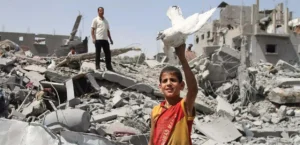
Gaza is in the grip of starvation. 2 months of Israel’s total closure have left markets empty and famine conditions spreading.
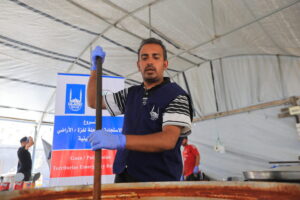
Amid the escalating assault on Gaza, how is Islamic Relief delivering aid? Read this current update on how our teams are still on the